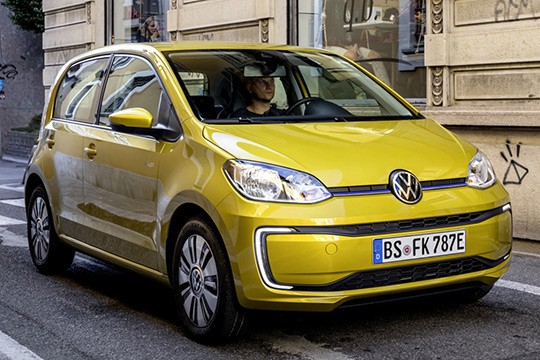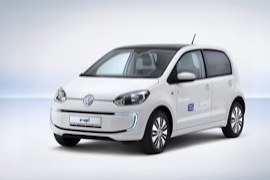VOLKSWAGEN e-UP! Models/Series Timeline, Specifications & Photos
First production year: 2013
Engines: Electric
Body style: Hatchback
In production relatively unchanged since 2013, the Volkswagen e-Up! received a rather substantial mid-cycle facelift in 2019. Part of a multi-billion euros electric vehicle offensive that also includes all-new cars from the ID. lineup, the refreshed e-Up! features a brand new battery, which offers increased range, and an even more competitive price compared to its predecessor. The visual enhancements are minimal, with the overall design language being largely identical to the old model.
The new Lithium-ion battery has a capacity that has been almost doubled, from 18.7 to 36.8 kWh, of which 32.3 kWh comprise usable energy. Thanks to an average energy consumption of around 12.9 kWh/100 km, the revamped VW e-Up! can achieve a range of up to 260 kilometers from a single charge. Using direct current from the optional CCS charging connection, the model can be recharged from 0 to 80 percent in a single hour. With alternative current from a 7.2 kW socket, the battery can be charged at the same 80 percent in a little over four hours. The e-Up! is powered by an electric motor that deliver 83 peak horsepower and 212 Nm of instant torque, which helps the car hit 100 kph (62 mph) from a standing start in 11.9 seconds. Top speed is electronically limited to 130 kph. No less than three different driving profiles and five energy recovery levels are available.
Volkswagen introduced the UP! model in 2010 and announced that an electric version would follow as well, so the electron-powered e-UP! was launched in 2013.
With an increased demand for economical and ecological vehicles, the German automaker found a way to clean its name after the Dieselgate scandal. Thus, VW created a vehicle that could take its customers from A to B in silence and comfort and still be able to be charged at a regular home outlet. Maybe it wasn't the most beautiful or practical car, but it was a big bang for the buck offer.
While it shared its bodywork with its gasoline-powered siblings, the e-UP! Didn't need the same cooling area. Thus, the automaker created a new front bumper with a different lower area. Instead of a grille, it sported a panel flanked by LED lights. Yet, the headlights still sported halogen bulbs. To further differentiate the electric version from the rest of the range, the automaker installed standard 15" light-alloy wheels with a unique design. The charging port was neatly concealed in the right rear quarter panel.
Inside, it looked like a well-equipped up! but still, the dashboard looked different. The speedometer took center stage while the energy consumption gauge was on the left, and the battery level was on the right. Atop the center stack, mounted directly on the dashboard, the supermini electric vehicle featured a navigation system, while the music came from a CD radio mounted underneath the climate control unit.
Power came from a 60 kW (80 hp) electric motor fed by an 18,6 kWh battery pack integrated into the car's floor.

